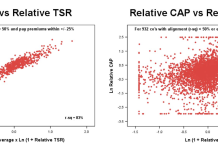From September 2022, there will be additional cuts to student loan interest to protect borrowers from rising inflation rates
For those on student Plans 2 (undergraduate) and 3 (postgraduate) loans, the student loan interest is to be capped at 6.3%, after the government intervened in June in response to the rise in the rate of RPI.
Due to national economic pressures, such as the energy crisis and rising inflation across the UK, student loan borrowers were facing a 12% interest rate in September.
Monthly student loan repayments are calculated by income rather than interest rates or the amount borrowed. Unlike commercial loans, repayments will stop for any borrowers who earn below the relevant repayment threshold.
How much has the interest cap been reduced by?
Setting an interest rate of 6.3% rather than 12% will bring down the student loan interest rates by the largest amount on record.
This entails that a borrower with a student loan balance of £45,000 would reduce their accumulating interest by around £210 per month compared to 12% interest rates, for instance.
This is on the total value of the loan, as monthly repayments do not change. The Government later used predicted market rates to bring forward a cap on interest rates to a maximum of 7.3%.
“we have cut future interest rates so that no new graduate will ever again have to pay back more than they have borrowed in real terms.”
Minister for Skills, Further and Higher Andrea Jenkyns said: “We understand that many people are worried about the impact of rising prices and we want to reassure people that we are stepping up to provide support where we can.
“Back in June, we used predicted market rates to bring forward the announcement of a cap on student loan interest rates down from an expected 12% and we are now reducing the interest rate on student loans further to 6.3%, the rate applying today, to align with the most recent data on market rates.
“For those starting higher education in September 2023 and any students considering that next step at the moment, we have cut future interest rates so that no new graduate will ever again have to pay back more than they have borrowed in real terms.”

What are the government doing to support lower-income households?
To further tackle rising inflation, the government is providing support for households to help those struggling to make their incomes stretch to cover the basics.
This funding should provide eight million of the most vulnerable households with £1,200 extra support this year, with all domestic electricity customers receiving at least £400.
The National insurance contribution threshold was additionally raised in July 2022, giving workers a tax cut of up to £330 per year. Lastly, many low-income households have received the first instalment of their Cost of Living Payment.











